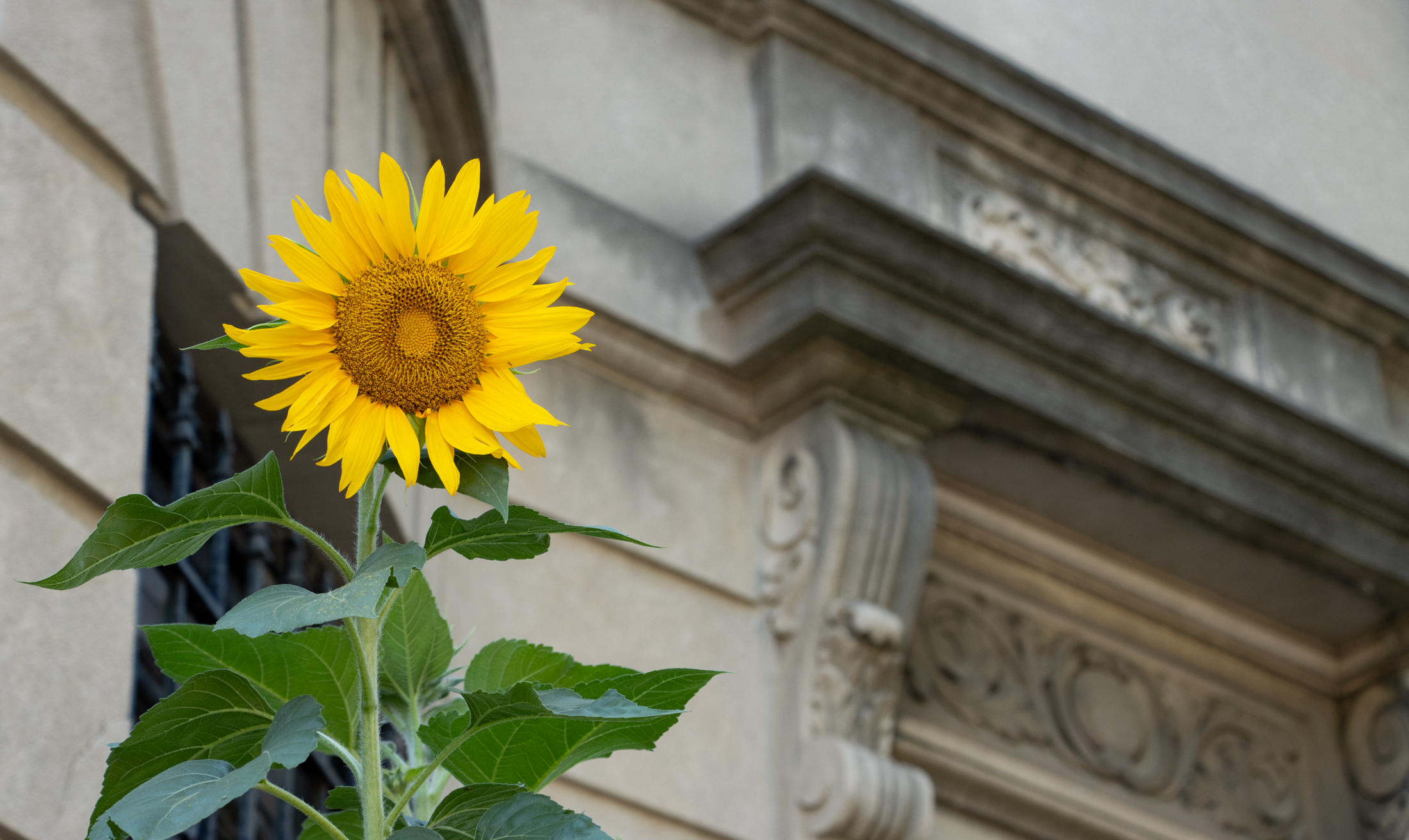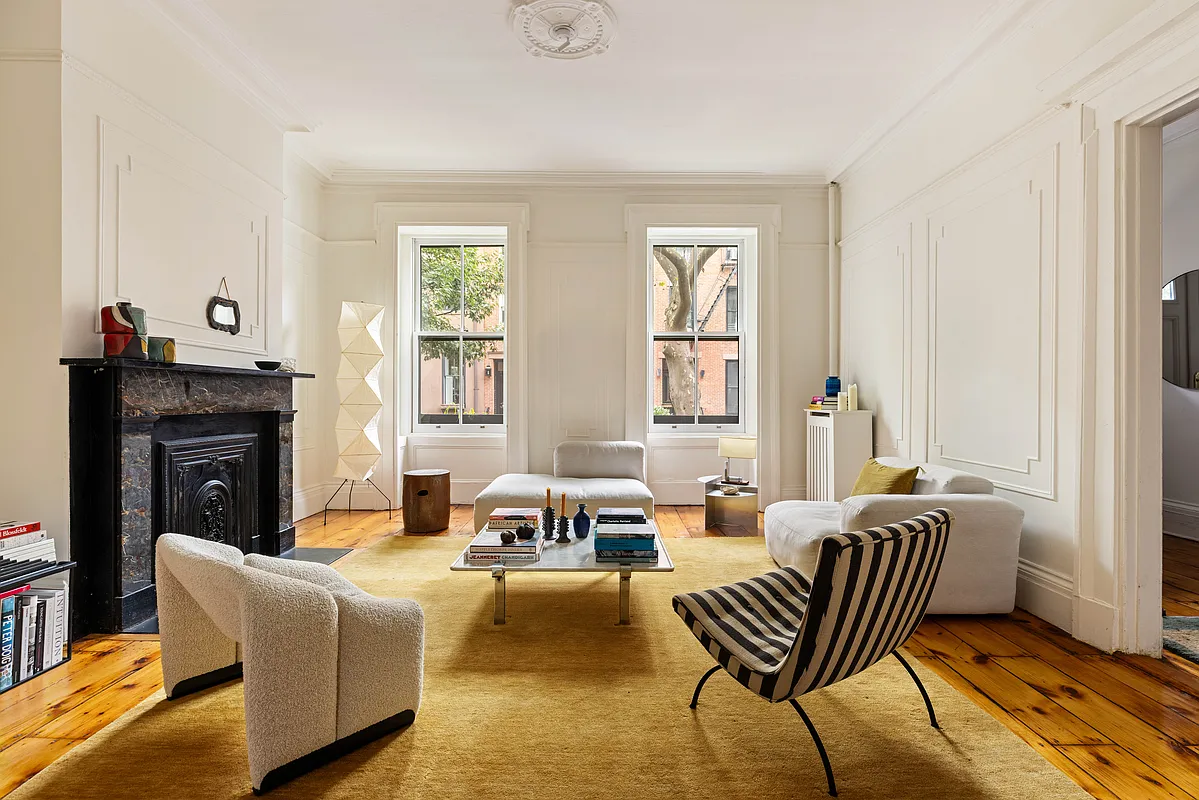Walkabout: All the World’s a Stage
You’ve had this happen to you at some point in your life. Sometimes when you are running late, there just isn’t enough time to get ready, change clothes, and get on the train to make it to an engagement on time. You make it to the station, and then have to wait what seems like…

You’ve had this happen to you at some point in your life. Sometimes when you are running late, there just isn’t enough time to get ready, change clothes, and get on the train to make it to an engagement on time. You make it to the station, and then have to wait what seems like forever for a train to come, and then it crawls along, going so slowly you swear you could have run beside it and made better time. There are those times when you have to change shoes or a jacket, maybe put on makeup, and the car becomes your dressing room, and in that quintessential New York way, your stage. Your mother told you not to make a spectacle of yourself in public. So imagine what it might have been like for the passengers on the Flatbush trolley line, headed through Brooklyn, on a chilly March evening in 1902.
The Glee, Mandolin and Banjo Club of New York University had a gig at the prestigious Knickerbocker Field Club in Flatbush, at the edge of Prospect Park South. The fourteen young men met at the Manhattan side of the Brooklyn Bridge, and boarded the trolley for the trip across the bridge, and on to Flatbush. They had just come back into the city from another concert date in Boston, and were running late. They had rushed downtown to catch the trolley, carrying with them all of their musical instruments and their dress clothing, having had no time to rest or change.
By the time the trolley got to the Borough Hall Station, it became apparent that they would not have time to change before their concert started at 8 pm, so the boys, who had commandeered one half of the crowded trolley car, began opening their garment bags and valises, and began laying out their dress clothes. To the delight, or annoyance, of the passengers in the car – hey, this is Brooklyn, one of the banjo players took out his instrument, tuned it, and played a couple of lively melodies while his fellows carefully laid out shirts, pants, socks, collars, cuffs and button studs. He wanted to have the mandolin players join him, but all of them told him they were too busy getting ready.
The very proper young men began to change their button studs, transferring them from the shirts they had on, to the clean crisp shirts they were wearing that evening. Their fellow passengers watched in fascination. One young man calmly took off his jacket, his vest, then his collar and tie, all the time singing a song called “Sallyannlou.” The passengers looked on, the women especially in suspense. Was he really going to take his shirt off in public, in front of them? Just then, the train switched tracks at Joralemon and Fulton, and the electric power pole jumped the line. The car went completely dark, until the power was restored. When the lights went up, the young man was dressed in his clean shirt, and his old one lay crumpled on the floor. He had never stopped singing about “Sallyannlou.” The reporter for the Brooklyn Eagle, who conveyed this front page story on March 20th, 1902, said of this moment, “A breath of relief escaped from the passengers.”
But there were thirteen other boys who needed to change. Could the trolley jump the pole that many times to spare the delicate sensibilities of the ladies on board? Well, some of these collegiate flashers were not going to take that chance. One lad, in deference to the people walking along Fulton Street, next to the trolley, pulled the shade down on the window. He then boldly pulled off his shirt, yes, right there on the trolley in front of the ladies! The women screamed and headed for the doors. There in front of them was a young man boldly parading around the car in his brightly colored undershirt! The horror, the scandal! As the paper said, “That undershirt was the gayest article that was ever sold over a counter. It claimed every bright color any dye house could boast of. It was startling.” That statement could have been truer than that reporter knew.
One of the other glee members shouted “Heaven help us!” and spread his overcoat over the offending tee shirt. The musical director called for music, and the banjo player began to play, soft and low, while the undershirt was covered by a suitable shirt and vest. Other boys were busy changing, calling out for lost socks, and adjusting crisp starch collars. The car came to a halt, and the banjo player yelled “All off”, and the entire club scrambled, half dressed, to grab instruments and belongings, and rush for the door. It was a false alarm, and only the directions of sympathetic passengers put the boys back on the trolley still with many more stops to go until reaching Flatbush.
“I’ve got time to change my trousers”, a young man cried. By this time there was only one young woman left in the car, the others had all gotten off as soon as they were able. She looked as if she had no problem staying right where she was. The young man calmly transferred his valuables from the pockets of his old pants to his new, and took his time removing and fastening his suspenders on the new pants. He was just getting ready to change when the conductor came in the car. No one had told him that his car was being used as a dressing and green room, and he was not amused. He told the boys they were almost at Church Avenue, so the young man had better wait to put his pants on, because he wasn’t go to do it here.
The doors opened, and the fourteen young men stepped forth in the chill spring night. They had a song on their lips, walking down the street towards the Knickerbocker Club, where they entertained their sponsors in an evening of music and merriment. They made it to the stage on time, and were even early enough to allow them all to finish dressing. The women of Brooklyn were spared on the return trip to Manhattan. The Glee, Mandolin and Banjo Club of New York University, located far north, in University Heights in the Bronx, was too tired to entertain any further that night.
(Photo: Ephemeral New York. postcard of Flatbush at Bergen St. circa 1910)





Ahem…Ahem, respectable young ladies were supposed to carry their own smelling salts -but they mostly fainted because their corsets were too tight.
Respectable? What’s that? (‘scuse me- cutting laces as we speak).
Exactly! you gotta cut a lace or two. Leggo those eyelets.
Those corsets can displace your internal organs you know, but it’s worth it to be a Goddess.
the historic knickerbocker field club burned down about twenty years ago.
Ahem…smelling salts? I’ve swooned here at the sight of a brightly colored tee shirt you know. Am I just supposed to lie here on the floor of the trolley?
I’m sure I would have simply swooned and minard would have had to use the smelling salts!
Great story, MM- and by our lights, hilarious. wonder what color that undershirt was? Oh- I blush to even think about it.
yes, they built a new structure with the insurance proceeds. The old building was a landmark, until it wasn’t.